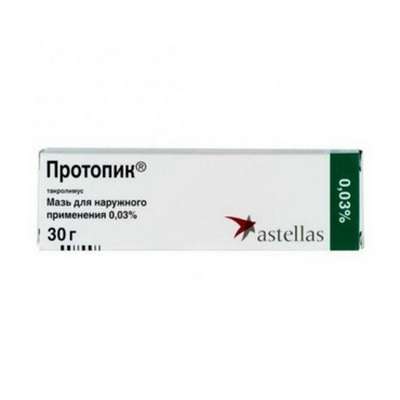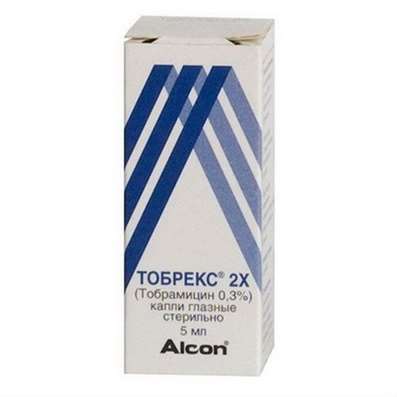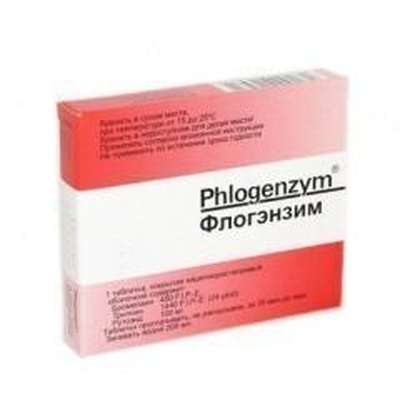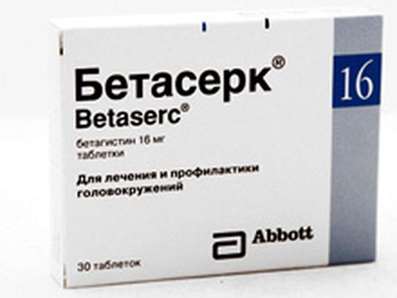Instruction for use: Rituximab
I want this, give me price
Trade name of the drug – Acellbia, Mabthera, Reddytux, Rituximab
The Latin name of the substance Rituximab
Rituximabum (genus. Rituximabi)
Pharmacological groups:
Antineoplastic agents - monoclonal antibodies
Immunosuppressive drugs
The nosological classification (ICD-10)
C82 Follicular [nodular] non-Hodgkin's lymphoma: Brill-Simmers disease; Malignant lymphoma; Hepatic Lymphoma; Recurrent non-Hodgkin's lymphoma; Follicular B-cell non-Hodgkin's lymphoma; Follicular lymphoma; Lymphoma of the liver
C83 Diffuse non-Hodgkin's lymphoma: Diffuse B-large-cell non-Hodgkin's lymphoma; Malignant lymphoma; Malignant lymphoma, especially of the histiocytic type; Lymphoblastic non-Hodgkin's lymphoma; Lymphoma non-Hodgkin's diffuse; Hepatic Lymphoma; Recurrence of lymphoma; Recurrent non-Hodgkin's lymphoma; Lymphoma of the liver
C85.1 B-cell lymphoma, unspecified: Chemically resistant B-cell non-Hodgkin's lymphoma; B-cell non-Hodgkin's lymphoma; Follicular B-cell lymphoma; Diffuse B-Large-Cell Non-Hodgkin's Lymphoma
CAS code
174722-31-7
Characteristics of the substance Rituximab
It is a synthetic (genetically engineered) chimeric mouse / human monoclonal antibody that has a specificity for the CD20 antigen found on the surface of normal and malignant B lymphocytes. The structure of rituximab refers to immunoglobulins of class G1 (IgG1 kappa), its molecule contains murine variable fragments of light and heavy chains and the human constant segment. Rituximab consists of 2 heavy chains of 451 amino acids and 2 light chains of 213 amino acids and has a molecular weight of about 145 kD. The affinity of rituximab for the CD20 antigen is approximately 8 nM. Chimeric anti-CD20 antibodies are produced by the mammalian cells (the culture of Chinese hamster cells) in the nutrient medium into which the chimeric gene obtained by genetic engineering has been introduced.
Pharmacology
Mode action - Antitumor.
Rituximab specifically binds to the transmembrane antigen CD20 (a hydrophobic protein with a molecular weight of 35 kDa). This antigen is localized on the surface of pre-B lymphocytes and mature B-lymphocytes, but is absent on stem hemopoietic cells, pro-B cells, normal plasma cells and healthy cells of other tissues. This antigen is expressed in more than 90% of B-cell non-Hodgkin's lymphomas. CD20 antigen regulates all stages of maturation of B lymphocytes, beginning with the early stages, and also functions as a regulator of transport of calcium ions through the cell membrane. After binding to the antibody, the CD20 molecule is not discharged from the cell surface into the extracellular space and is not internalized, CD20 does not circulate in the plasma as a free antigen.
Mechanism of antineoplastic action: The Fab fragment of rituximab binds to the CD20 antigen on lymphocytes and, with the participation of the Fc domain, initiates immunological reactions mediating lysis of B cells (shown in vitro). Possible mechanisms of cell lysis include complement-dependent cytotoxicity (KZTST) and antibody-dependent cell-mediated cytotoxicity (APCT). It has also been shown that rituximab induces apoptosis in DHL-4 cells of human B-cell lymphoma.
Rituximab binds to the lymphoid cells of the thymus, white pulp of the spleen and most B-lymphocytes of the peripheral blood and lymph nodes.
The median number of B cells in the peripheral blood after the first introduction of rituximab is reduced to below normal levels, and after 6-9 months begins to recover, returning to normal by 12 months after completion of therapy.
Human anti-chimeric antibodies were found in 4 of 356 patients (approximately 1% of patients), in 3 patients an objective clinical response was observed.
Pharmacokinetics
In patients receiving single dose doses of rituximab 10, 50, 100, 250 or 500 mg / m2, the serum levels and T1 / 2 rituximab increased in proportion to the dose. In 14 patients with IV infusion at a dose of 375 mg / m 2 receiving therapy for 4 weeks after the first infusion, the mean T1 / 2 of serum was 76.3 h (in the range of 31.5-152.6 h), after The fourth infusion was 205.8 h (in the range of 83.9-407.0 h). A wide range of half-life may reflect the variability of the tumor mass in different patients and changes in the population of CD20-positive (normal and malignant) B cells after repeated injections. When rituximab was administered at a dose of 375 mg / m2 as an intravenous infusion with a weekly interval of 203 patients, the mean C max after the fourth injection was 486 μg / ml (in the range of 77.5-996.6 μg / ml). Serum levels of rituximab negatively correlated with the magnitude of the tumor burden. The median serum level in the equilibrium state was higher in the responders compared to the nonresponder, but no differences in the elimination rate (serum T1 / 2 measurement) were found. Rituximab is capable of cumulation, is found in the body for 3-6 months after the end of treatment.
Clinical researches
Patients (N = 296) with recurrent or resistant B-cell non-Hodgkin's lymphoma of low grade or follicular lymphoma were included in the study. Dosage regimens were different: patients received rituximab at a dose of 375 mg / m2 in the form of intravenous infusions, with an interval of one week, 4 infusions (N = 166), or 8 (N = 37). Clinically, these studies also differed, such as initial treatment, initial treatment with a large tumor mass, repeated treatment.
Initial therapy, 4 weekly injections. In a multicenter, open-label study with 4 infusions of rituximab (N = 166), exclusion criteria were large tumors (> 10 cm) or peripheral blood lymphocyte counts> 5000 cells / μl. The total remission rate was 48%, complete remission - 6%, partial remission - 42%. The median time to response to therapy was 50 days and the median time to disease progression in patients responding to therapy was 11.2 months (range 1.9 to 42.1 +, "+" means current response). Disease-related signs and symptoms (including B-symptoms) were present in 23% (39/166) patients at the beginning of the study and disappeared in 64% (25/39) of these patients.
Multivariate analysis showed that the total remission rate in patients with histological subtypes of tumors B, C and D (according to the classification IWF - International Working Formulation) was higher than with subtype A (58 and 12%, respectively); In patients with the largest tumor focus with a diameter of less than 5 cm - higher than with a focus larger than 7 cm in diameter (53 and 38%) and in patients with chemosensitive relapse - higher than with chemo-resistant (defined as a remission period of less than 3 months) (53 and 36% respectively). The total remission rate in patients who had previously undergone autologous bone marrow transplantation reached 78% (18/23). Factors such as age ≥60 years, extranodal lesion localization, previous anthracycline therapy and bone marrow damage, did not correlate with a lower remission rate.
Initial therapy, 8 weekly injections. In a multicenter study similar to the previous one, with 8 rituximab infusions (N = 37), the total remission rate was 57%, complete remission - 14%, partial remission - 43%, median time to disease progression in patients responding to therapy - 13 , 4 months (range from 2.5 to 36.5 +).
The effectiveness of therapy in patients with a large (more than 10 cm in diameter) tumor mass (N = 39) is somewhat lower (the total remission rate is 36%), and in repeated treatment (N = 60) it is also somewhat lower (38%).
Use in elderly patients. In clinical trials, 24% of patients were aged 65 to 75 years, 5% from 75 years and older. Significant differences in the length of time the response to therapy and the frequency and severity of side effects in the elderly compared with the same parameters in the age group of patients under 65 years of age was not found.
Application of the substance Rituximab
B-cell non-Hodgkin's lymphomas (recurrent or chemostatic, low-grade or follicular) in adults.
Contraindications
Hypersensitivity to rituximab or to mouse proteins.
Restrictions
High tumor burden (the size of foci more than 10 cm), tumor lung infiltration, pulmonary insufficiency in history, cardiovascular diseases (angina, arrhythmia), neutropenia (less than 1500 cells / μl), thrombocytopenia (less than 75,000 cells / μl), children's age (Safety and effectiveness of use in children are not established).
Pregnancy and breast-feeding
Prescribe to pregnant women is possible only if the benefits of therapy exceed the potential risk to the fetus. There were no long-term animal studies to establish potential carcinogenicity, mutagenicity, effects on fertility, no toxic effects of rituximab on the reproductive system of animals. Whether rituximab can have a damaging effect on the fetus when prescribing to pregnant women and whether it affects the ability to procreate is unknown. It is known that IgG immunoglobulins pass through the placental barrier, so rituximab can cause depletion of the B-cell pool in the fetus. During and for 12 months after the end of rituximab treatment, women of childbearing age need to use effective contraceptive methods.
The action category for fetus by FDA is C.
It is not known whether rituximab is excreted in breast milk in women. However, given that IgG immunoglobulins circulating in the mother's blood enter breast milk, rituximab should not be given to nursing mothers.
Side effects of Rituximab
Fatal infusion reactions. There are reports of fatal outcomes within 24 hours after the infusion of rituximab. These lethal cases were the result of the development of a complex of infusion reactions, including hypoxia, pulmonary infiltration, acute respiratory distress syndrome, myocardial infarction, ventricular fibrillation, or cardiogenic shock. Approximately 80% of fatal infusion reactions were observed during the first infusion (see "Infusion reactions" and "Precautions").
Tumor lysis syndrome. Reported acute renal failure, developed in the treatment of rituximab and requiring dialysis, there are lethal cases (see "Complications from the kidneys" and "Precautions").
Rituximab causes a rapid lysis of benign and malignant CD20-positive cells. The appearance of symptoms characteristic of tumor lysis syndrome (acute renal failure, hyperkalemia, hypocalcemia, hyperuricemia, hyperphosphataemia) is described, within 12-24 hours after the first infusion of rituximab.
Complications from the kidneys. The administration of rituximab was sometimes accompanied by severe renal toxicity, including acute renal failure with the need for dialysis and, in several cases, a fatal outcome. The incidence of renal toxicity was higher in patients with a large number of circulating malignant lymphocytes and with a high tumor burden (see Tumor Lysis Syndrome), as well as in patients who were simultaneously assigned cisplatin in clinical trials. The combination of cisplatin with rituximab is not recommended. In the case of using this combination, extreme caution and careful monitoring of the patients is necessary to promptly detect an increase in serum creatinine or oliguria.
Severe reactions from the mucous membranes and skin. Described reactions, sometimes accompanied by death, in connection with treatment with rituximab (see "Precautions"). These reactions include paraneoplastic pemphigus (a rare disease that occurs in patients with malignant neoplasms), Stevens-Johnson syndrome, lichenoid dermatitis, vesiculo-bullous dermatitis, toxic epidermal necrolysis. The onset of these reactions in these cases ranged from 1 to 13 weeks after the administration of rituximab. Patients with severe skin reactions should not receive any further infusion of rituximab (safety of re-administration of rituximab in this group of patients is not assessed).
Most serious adverse reactions caused by rituximab include: infusion reactions, tumor lysis syndrome, mucosal and skin reactions, hypersensitivity reactions, cardiac arrhythmias, angina pectoris, kidney failure. The most common infusion reactions and lymphopenia.
Monotherapy with rituximab
Table 1 presents data on adverse events observed in patients who received rituximab as a monotherapy (N = 356) for non-randomized, non-comparative studies. Most patients received rituximab at a dose of 375 mg / m2 once a week for 4 weeks. Among these patients, 39 had large tumors (≥10 cm) and 60 patients who received more than 1 course of rituximab therapy. The most severe side effects are combined in the graph as "3 and 4 severity" according to the National Cancer Institute Common Toxicity Criteria.
The side effects data from clinical trials cannot be used directly to compare with the results of other clinical trials (since different studies are conducted with a different set of conditions), and to predict the occurrence of side effects in routine medical practice, since The status of patients and other factors may differ from those that prevailed in clinical trials. However, information on the side effects observed during clinical trials can give an idea of the relative contribution of the substance itself and other factors to the development of adverse effects when using drugs in the population.
The table shows the adverse effects observed in clinical trials in at least 5% of patients for 12 months after rituximab therapy.
Table 1
Side effects observed in clinical trials with rituximab therapy
| Body Systems / Side Effects | Frequency of adverse events | |
| Any degree of severity (%) | 3 and 4 severity (%) | |
| Any side effect | 99 | 57 |
| Organism as a whole | 86 | 10 |
| Fever | 53 | 1 |
| Chills | 33 | 3 |
| Infection | 31 | 4 |
| Asthenia | 26 | 1 |
| Headache | 19 | 1 |
| Abdominal pain | 14 | 1 |
| Pain | 12 | 1 |
| Backache | 10 | 1 |
| Throat irritation | 9 | 0 |
| Tides of blood to the face | 5 | 0 |
| The cardiovascular system | 25 | 3 |
| Hypotension | 10 | 1 |
| Hypertension | 6 | 1 |
| Digestive system | 37 | 2 |
| Nausea | 23 | 1 |
| Diarrhea | 10 | 1 |
| Constipation | 3 | 1 |
| Vomiting | 10 | 1 |
| Hemopoiesis | 67 | 48 |
| Lymphopenia | 48 | 40 |
| Leukopenia | 14 | 4 |
| Neutropenia | 14 | 6 |
| Thrombocytopenia | 12 | 2 |
| Anemia | 8 | 3 |
| Other | 38 | 3 |
| Angioedema | 11 | 1 |
| Hyperglycaemia | 9 | 1 |
| Peripheral edema | 8 | 0 |
| Increased LDH activity | 7 | 0 |
| Flu-like symptoms | 5 | 4 |
| Musculoskeletal system | 26 | 3 |
| Myalgia | 10 | 1 |
| Arthralgia | 10 | 1 |
| Nervous system | 32 | 1 |
| Dizziness | 10 | 1 |
| Anxiety | 5 | 1 |
| Respiratory system | 38 | 4 |
| Coughing up | 13 | 1 |
| Rhinitis | 12 | 1 |
| Bronchospasm | 8 | 1 |
| Dispnoe | 7 | 1 |
| Sinusitis | 6 | 0 |
| Skin and its appendages | 44 | 2 |
| Night sweat | 15 | 1 |
| Rash | 15 | 1 |
| Itching | 14 | 1 |
| Hives | 8 | 1 |
Risk factors associated with an increased incidence of adverse events. The administration of 8 doses of rituximab once a week resulted in an increase in the incidence of adverse reactions of 3 and 4 degrees of severity to 70% (compared to 57% with the administration of 4 doses). The frequency of adverse reactions 3 and 4 severity was similar in patients re-receiving rituximab, compared with initial treatment (58 and 57%, respectively).
In patients with high tumor load (the size of single foci ≥ 10 cm in diameter) (N = 39), the frequency of the following clinically pronounced adverse reactions was increased compared to patients with focal size <10 cm (N = 195): abdominal pain, anemia, Dyspnea, hypotension, neutropenia.
Infusion reactions (see also Fatal Infusion Reactions and "Precautions"). Most patients during the first infusion have an infusional symptom complex from mild to moderate severity, consisting of fever and chills / tremors. Other frequently observed infusion symptoms are nausea, itching, angioedema, asthenia, hypotension, headache, bronchospasm, irritation in the throat, rhinitis, urticaria, rash, vomiting, myalgia, dizziness, hypertension. As a rule, these reactions occur within 30-120 min after the start of the first infusion and disappear after slowing or interrupting the administration of the drug and carrying out supportive measures (including intravenous infusions of saline, diphenhydramine and paracetamol). In the analysis of the administration of rituximab to 356 patients who received weekly 1 infusion for 4 (N = 319) or 8 (N = 37) weeks, the incidence of such reactions was greatest at the first infusion and was 77%, and with each subsequent infusion it decreased: Up to 30% (4th infusion) and 14% (8th infusion).
Infectious complications. Rituximab leads to depletion of the B-cell pool in 70-80% of patients and a decrease in serum immunoglobulin levels in a small number of patients; Lymphopenia with a median duration of 14 days (range from 1 to 588 days). The incidence rate of infections was 31%: 19% - bacterial infections, 10% - viral, 1% - fungal, 6% - unknown etiology (these percentages should not be added, since a single patient can have more than one type of infection ). Serious cases (3rd and 4th degree of severity), including sepsis, were noted in 2% of patients.
Hematologic adverse events. In clinical trials, patients treated with rituximab in 48% of cases developed cytopenia, including. Lymphopenia (40%), neutropenia (6%), leukopenia (4%), anemia (3%), thrombocytopenia (2%). Median duration of lymphopenia was 14 days (range from 1 to 588 days), neutropenia - 13 days (range from 2 to 116 days). After treatment with rituximab, 1 case of transient aplastic anemia (aplasia of the erythrocyte germ only) and 2 cases of hemolytic anemia are described.
In addition, there are a limited number of post-marketing reports of prolonged pancytopenia, bone marrow hypoplasia, and late neutropenia (defined as occurring 40 days after the last injection of rituximab) in patients with hematologic malignancies.
Cardiovascular adverse events. Cardiovascular reactions of the 3rd and 4th degree of severity include hypotension. Rare, fatal cases of heart failure with the development of symptoms after a week after the start of rituximab treatment are described.
Infusion should be discontinued if a serious, life-threatening arrhythmia develops. Patients who developed clinically significant arrhythmia should undergo cardiac monitoring during and after the next infusion of rituximab. Patients with previous cardiac disorders, including arrhythmia and angina, may develop this symptomatology during rituximab therapy, so they should be monitored throughout the infusion and immediately afterwards.
Pulmonary symptoms. In clinical trials, pulmonary adverse events were observed in 135 patients (38%). The most common side effects from the respiratory system included: increased cough, rhinitis, bronchospasm, dyspnoea, sinusitis. Both clinical studies and post-marketing observations had a limited number of reports of bronchiolitis obliterans present up to 6 months after rituximab infusion and a limited number of reports of pneumonitis (including interstitial pneumonitis) present up to 3 months after rituximab infusion (some of Of these pulmonary complications were fatal). The safety of the resumption or continuation of the administration of rituximab in patients with pneumonitis or obliterating bronchiolitis is unknown.
Reactivation of hepatitis B has been reported on the reactivation of hepatitis B virus with the development of fulminant hepatitis, hepatic insufficiency and death in several patients with hematologic malignancy who received rituximab therapy. Most patients received rituximab in combination with chemotherapy. The median time to diagnosis of hepatitis was approximately 4 months after initiation of rituximab injections and approximately 1 month after the last dose.
Patients with a high risk of infection with hepatitis B virus should be screened before starting treatment with rituximab to detect the virus. Hepatitis B virus carriers should be carefully screened for evidence of active infection and hepatitis symptoms during rituximab therapy and several months after it. If the patient develops a viral hepatitis, rituximab and any concomitant chemotherapy should be withdrawn and appropriate treatment, including initial antiviral therapy, should be prescribed. There is insufficient data showing the safety of the resumption of treatment with rituximab in patients who developed hepatitis due to the reactivation of the hepatitis B virus.
Immune / autoimmune adverse reactions. There have been reports of reactions such as uveitis, visual neuritis in patients with systemic vasculitis, pleurisy in patients with lupus-like syndrome, serum sickness with polyarticular arthritis and vasculitis with a rash.
Less common observed side effects. In clinical trials, less than 5% and more than 1% of the observed patients had the following side effects (causal relationship with the appointment of rituximab not established) - agitation, anorexia, arthritis, conjunctivitis, depression, dyspepsia, edema, hyperkinesia, hypertension, hypoesthesia, hypoglycemia, pain in Injection site, insomnia, tearing disorder, malaise, irritability, neuritis, neuropathy, paresthesia, drowsiness, vertigo, weight loss.
Interaction
When other monoclonal antibodies are injected for diagnostic purposes, patients who have antibodies against mouse proteins or anti-chimeric antibodies can develop allergic reactions or hypersensitivity reactions.
When administered with cyclophosphamide, doxorubicin, vincristine, prednisolone - there was no increase in the incidence of toxic effects. Drugs that depress bone marrow hematopoies, increase the risk of myelosuppression.
Overdose
There were no cases of overdose in clinical studies in humans. However, single doses greater than 500 mg / m2 have not been studied.
Routes of administration
IV.
Precautionary measures
Infusions are possible only in a hospital under the close supervision of an oncologist or a hematologist with experience in such treatment, and there should be everything ready for resuscitation in full. In connection with the danger of developing hypotension, it is recommended to cancel antihypertensive drugs 12 hours before and during the entire infusion time. It is necessary to strictly comply with infusion regimens, inadmissible intravenous fluid injection or bolus administration.
To prevent the development of the "cytokine release syndrome" 30 to 60 minutes before each procedure, premedication is required: analgesic / antipyretic (for example, paracetamol) and antihistamine (diphenhydramine, etc.) remedy, and with an increased risk of allergic reactions, corticosteroids. Light or moderately expressed reactions can be eliminated by reducing the rate of administration, which can be increased again after the symptomatology has disappeared. In most cases, patients with adverse reactions that did not endanger life, the course of treatment with rituximab was completely completed.
Tumor lysis syndrome. Individual cases of fatal outcomes were observed in connection with the development of this syndrome in patients receiving rituximab. The risk of developing the syndrome is higher in patients with a large number of circulating malignant lymphocytes (≥25000 cells / mm2) or with a high tumor burden. Patients at risk for tumor lysis syndrome should be provided with preventive measures (close monitoring, appropriate laboratory monitoring, including monitoring of renal function and electrolyte balance, development of symptoms of rapid tumor lysis - appropriate medication, correction of electrolyte disorders, dialysis) . In a limited number of cases after complete relief of symptoms, rituximab therapy was continued in combination with the prevention of rapid tumor lysis syndrome.
Care should be taken (at the first introduction - a lower rate of infusion, careful observation) in patients with the size of single tumor lesions more than 10 cm in diameter or with the number of circulating malignant cells ≥25000 cells / mm3 due to the increased incidence of serious adverse reactions. Because of the high risk of "cytokine release syndrome", patients with anamnestic indications of pulmonary insufficiency and with tumor pulmonary infiltration can be appointed under conditions of careful observation and only if other methods of treatment are ineffective. With the development of the "cytokine release syndrome", the infusion should be stopped immediately and intensive symptomatic therapy started.
Caution is prescribed to patients with neutropenia (less than 1500 cells per 1 μl) and thrombocytopenia (less than 75,000 cells per 1 μl); During the course, regular monitoring of the cellular composition of peripheral blood is necessary.
Immunization. The safety of immunization with any vaccine, especially live viral vaccines, was not evaluated after rituximab treatment. The ability to give a primary or anamnestic humoral response to any vaccine has also not been studied.

 Cart
Cart





